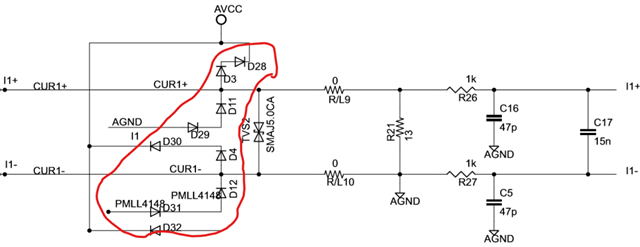Other Parts Discussed in Thread: TIDM-3PHMTR-TAMP-ESD, MSP430F6779
Tool/software:
According to refrence circuit diagram of TIDM-3PHMTR-TAMP-ESD, two 4148 diode were used at each AVCC and AGND line (I+, I-)
I found that someone also asked same question and TI engineer replied like below. (Refer to red squre mark)
This is my question.
1. if input current is less than 50A, is it OK if I use just one 4148 diode? (we use 32A)
2. we use shunt resistor for current sensing and sensing voltage is approximately 10mV. we will use intenal PGA amp gain=64.
Should we also use two 4148 diode in this case??



